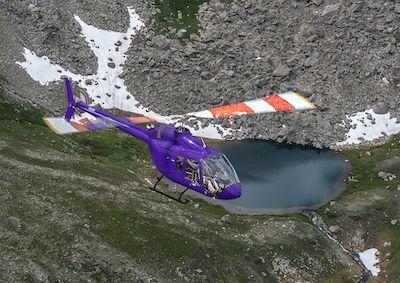Tue, Dec 03, 2019
Outlines Requirements For Crash-Resistant Fuel Systems, Seats And Other Structures
The FAA has published a tool kit for helicopter operators outlining requirements for crash-resistant systems and structures that go into effect in April, 2020.

The agency says that helicopters equipped with crash resistant fuel systems, crash resistant seats and structures provide the highest level of protection for pilots and passengers. A crash resistant fuel system increases the likelihood of surviving a helicopter crash due to a reduced threat of injuries from fire. Crash resistant seats and structures increase the probability of surviving the initial collision from an accident.
In the FAA Reauthorization Act of 2018, Section 317 prohibits helicopters manufactured after April 5, 2020, from flying in U.S. airspace unless certified with a crash resistant fuel system.
Crash resistant fuel systems increase safety for occupants by decreasing or delaying a post-crash fire. Systems that meet the FAA’s regulatory requirement minimize fuel leaks and lessen fuel ignition sources. Crash resistant fuel systems are required for all helicopter models that were certified after 1994. However, the requirement did not apply to newly built helicopters if the original design was certified before 1994. Most newly built helicopters continued to be those certified before 1994. As a result, nearly 25 years later, a low percentage of U.S. helicopters (about 15 percent) meet the regulatory requirement.
Similar to fuel systems, the design requirements for crash resistant seats and structures also improve survivability of a crash. They absorb a greater amount of the crash energy and they can prevent an occupant’s head from hitting the interior of the helicopter.
Due to the FAA regulatory requirement, all helicopter models certified after 1989 must have crash resistant seats and structures. However, if the original design was certified before 1989, the regulatory requirement does not apply. As a result, 30 years later, a low percentage of U.S. helicopters (about 10 percent) meet the regulatory requirement.
(Source: FAA. Image from file)
More News
Airport Marking Aids Markings used on runway and taxiway surfaces to identify a specific runway, a runway threshold, a centerline, a hold line, etc. A runway should be marked in ac>[...]
"It is extremely difficult, if not impossible, for manned aircraft to see a drone while conducting crop-enhancing and other aerial applications at low altitudes and high speeds. We>[...]
Aero Linx: The Skyhawk Association The Skyhawk Association is a non-profit organization founded by former Skyhawk Pilots which is open to anyone with an affinity for the A-4 Skyhaw>[...]
“The T-54A benefits from an active Beechcraft King Air assembly line in Wichita, Kansas, where all required METS avionics and interior modifications are installed on the line>[...]
Aero Linx: Aerostar Owners Association The Association offers the Aerostar Owner a unique opportunity to tap an invaluable source of information concerning the care and feeding of >[...]
 ANN's Daily Aero-Term (04.28.24): Airport Marking Aids
ANN's Daily Aero-Term (04.28.24): Airport Marking Aids Aero-News: Quote of the Day (04.28.24)
Aero-News: Quote of the Day (04.28.24) ANN's Daily Aero-Linx (04.28.24)
ANN's Daily Aero-Linx (04.28.24) Aero-News: Quote of the Day (04.29.24)
Aero-News: Quote of the Day (04.29.24) ANN's Daily Aero-Linx (04.29.24)
ANN's Daily Aero-Linx (04.29.24)



